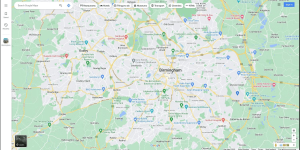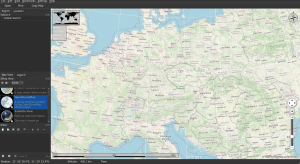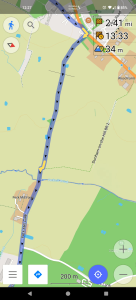
OpenStreetMap (OSM) vs. Google Maps
In the realm of digital navigation tools, Google Maps has long reigned as a prominent player, but there’s an alternative that’s gaining recognition and, in many aspects, surpassing the giant—OpenStreetMap (OSM). This community-driven map platform offers a refreshing array of features that set it apart from its well-known counterpart. Let’s dive into the six key reasons why you should seriously consider OpenStreetMap over Google Maps for your navigational needs.
1. Embrace Community Power: OpenStreetMap’s Collaborative Essence
While Google is a corporate behemoth, OpenStreetMap takes a different approach. It thrives on the collective efforts of a diverse and ever-growing community of volunteers. Unlike Google’s closed setup, OSM’s volunteer-driven model brings a host of advantages. Diverse viewpoints lead to richer map data, ensuring accuracy and completeness. Additionally, bugs are swiftly identified and resolved, thanks to the vigilant community. The heart of OpenStreetMap lies in the hands of those who are genuinely passionate about its success. The door is open for anyone willing to contribute.

2. Ad-Free Navigation: A Clear Advantage of OpenStreetMap
Google’s prime motive is profit, often achieved through advertising. As a result, Google Maps tends to bombard users with ads that can obscure vital information. OpenStreetMap, on the other hand, champions clarity. While it includes markers for important places, they are designed to be informative, not intrusive. These markers don’t hijack your attention and don’t clutter the map, allowing you to focus on what truly matters—navigating your world smoothly.

3. Flexibility Across Apps: OpenStreetMap’s Versatile Integration
Google Maps remains confined to its ecosystem, limiting your choices. OpenStreetMap thrives on openness. Its maps are free to use, adapt, and integrate into various applications. Whether you’re accessing maps on your browser or embedding them into your favorite apps, the possibilities are endless. Notable apps like OSMand+ and Magic Earth leverage OpenStreetMap’s data to offer seamless navigation experiences. Say goodbye to platform restrictions.

4. Unveiling the Unseen: OpenStreetMap’s Detailed Cartography
OpenStreetMap’s unique selling point lies in its inclusivity. It encourages contributors to map lesser-known locations that might escape Google’s attention. Unmarked tracks, historic rights-of-way, and public footpaths find their place on OSM’s maps. This dedication to detail means you can uncover hidden gems, explore off-the-beaten-path routes, and discover the shortest, most accessible trails. Experience your surroundings in a way that Google Maps simply can’t provide.
5. Navigational Freedom: Specialized Routing with OpenStreetMap
Navigating isn’t always straightforward, and everyone’s mode of transportation differs. Google Maps offers a handful of options, but OpenStreetMap takes it further. Whether you’re traveling on horseback, skis, motorcycle, or boat, OSM has specialized routing options that cater to your unique needs. These options go beyond Google’s standard choices, ensuring your journey is optimized and tailored to your chosen means of travel.

6. Mapping Your World Offline: OpenStreetMap’s Comprehensive Offline Use
The name may say “street,” but OpenStreetMap offers far more than just road data. Through platforms like OSMand+, you can access nautical maps, travel guides, and even Wikipedia articles, enhancing your understanding of your surroundings. The best part? You can download this wealth of information and use it offline. Google Maps falls short in comparison, with limited offline capabilities due to various constraints.
In Conclusion,
Google Maps may have a broader brand presence, but OpenStreetMap shines as a robust alternative. Its community-driven essence ensures accuracy, while its ad-free approach provides a distraction-free experience. With OpenStreetMap, you’re not limited to a single app ecosystem; the maps are yours to use and integrate wherever you please. Delve deeper into your surroundings with OSM’s attention to detail and specialized routing options. And when you’re offline, OpenStreetMap remains your reliable guide.
In a world where big-tech’s motives can raise eyebrows, OpenStreetMap stands tall as an open-source, community-powered gem. If you’re ready to break free from the mainstream and experience navigation on your terms, OpenStreetMap beckons with open arms.
So, the next time you’re on a quest to explore the world digitally, remember that the path less taken—OpenStreetMap—could lead you to a more enriching and personalized journey.













